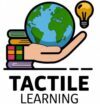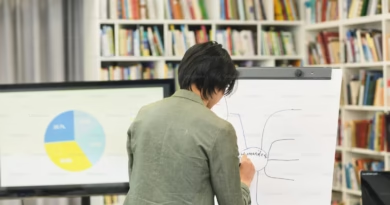Understanding the Distinctions Between Tactile and Kinaesthetic Learning and Their Impact on Education
Understanding the Distinctions Between Tactile and Kinaesthetic Learning and Their Impact on Education
The phrase kinesthetic learning and tactile learning are frequently used interchangeably in the context of education. Despite the commonalities, these learning styles reflect different ways that people interact with and assimilate knowledge. Comprehending these differences is vital for, parents, educators and students alike, since it enables customized approaches that optimize learning outcomes.
The main pinpoint differences, similarities, advantages of tactile and kinesthetic learning are examined in this article, along with practical suggestions for their other settings and schools.
What is Kinethetic and Tactile Learning Are?
Tactile Learning: What it is?
A hands-on learning approach ,tactile learning styles place a strong emphasis on using touch and manipulating real items.Physically interaction with things like making models, using manipulatives, doing well at learning process.Learning styles are important for teachers and students alike to understand learning styles are able to help different kinds of students thrive in their class room, using important and unique strategies, activities and assignments to cater to all different kinds of learners are important for teachers and students alike to understand.
The major learning styles are auditory, visual, tactile or kinesthetic,and writing and reading occasionally. Everyonewill probably employ, all these learning types during their schoolings, although most student have a perfect learning style. These learning styles boost up their memories
Important Qualities of Tactile Learners:
- Prefer Tactile and Tactile activities
- Improved information retention through Hands-on arrangements
- Gain from doing things like writing, sketching, or putting things together
Tactile learning examples include:
- Building 3D models to comprehend geometry.
- Creating and revising notes to improve memory
- Making use of textured flash cards or sensory bins
What is Kinesthetic Learning?
Kinaestheticlearning focuses on learning via moment and exercise.Kinaesthetic learners use their entire body for learning process, whereas tactile learners mostly use their hands. They flourish their dynamic settings that provide movement and hands-on education.
Key characteristics of Kinesthetic Learners:
- When movement is incorporated in to the lessons, student learn best.
- Have trouble staying motionless for extended periods of time
- An Educational instrument, favor activities like role playing, athletics, or dance.
- Examples of Kineasthetic learning:
- Historical events may be acted out in order to understand time and physical activities
- To investigate scientific ideas performing experiments
- Making large gestures, such as jumping on number lines can help students to learn mathematical problems
- What are the best ways to teach a Kinaesthetic Learners?
- When teaching it is important to understand the most effective ways your students retain information and understand concepts you teach them.
- you can cater to the auditory learners. When you can identify those that need a traditional approach, with hands outs, lecture-style styles lessons and summaries, you can cater to the auditory learners.
- Students who need mind-maps, colour coded notes and visual guides will appreciate information set out this way.
- Make sure you have hands-on experiences, lessons that have a practical aspect and include movement for kinaesthetic learners.
- Kinaesthetic Learning Examples:
- Hands-on simulations: Where possible, allow students to delve in to hands-on experiments, such as when attempting to demonstrate scientific concept.
- Clickable animations: Where a hands-on simulation is not feasible, the chance for students to have an animation they can interact with is a great way to ensure they remain engaged with the concept they are learning.
- Role playing and games.This is another excellent way to convey ideas to kinaesthetic learners, as it adds a fun and active element to the lesson, enriching their overall learning experience.
Tactile Learning vs. Kinesthetic Learning: Key Differences
| Aspect | Tactile Learning | Kinaesthetic Learning |
| Primary Focus | Touch and manipulations of objects | Movement as a whole-body engagement |
| Learning environment | Seated or stationary with physical tools | Active and dynamic spaces |
| Best Activities | Writings, Sculpting, using manipulatives | Acting, dancing, or performing tasks |
| Strengths | Fine motor skills, attention to detail | Gross motor skills, adaptability |
Although hands-on activities are beneficial for both Kinaesthetic and tactile learners, kinaesthetic learning incorporates full-body motion and spatial awareness, while tactile learning is more stationary and concentrates on texture and precision.
Benefits of Kinaesthetic and Tactile Learning that overlap
Both learning styles are beneficial and diverse in variety of educational contest:
- Improved Retention: Using several senses improves long-term retention by fortifying memory pathways.
- Enhanced Engagement: Students who actively participate remain engaged and experience less weariness from passive learning.
- Real-World Applications: By relating theoretical knowledge to concrete experiences, both approaches place an emphasis on practical abilities.
Adapting Instructions to Kinaesthetic and Tactile learners
Techniques for Tactile Students
- Provide Manipulatives:To explain concepts, use items like blocks, puzzles and counters.
- Promote Note Taking: Handwriting strengthens memory more then typing
- Use Sensory Tools: To promote sensory learning, use items with a range of textures, such felt or sand paper.
Strategies for Kinaesthetic Learners
- Include Movement: During lessons, let pupils pace while reading or making gestures
- Employ role-playing:Dramatizations and simulations help people relate to abstract ideas.
- Divide Lessons into Active Segments: To keep student’s attention, including stretch or physical breaks.
When to Distinguish between the two and why
A student is more tactile or kinaesthetic can influence teaching methods understanding is essential, For example:
• A tactile learner might struggle in an overly active environment but excel when given a hands-on task at their desk.
• Kinaesthetic learner may lose focus in a sedentary setting but thrive when lessons are linked to physical movement.Differentiating between these styles ensure each learner’s strengths are maximized.
Classrooms Activities to Support Both Learning Styles
Math:
- Tactile: Activities in the classrooms that encourage both learning styles.
- Kinaesthetic: Either jump along a huge number line or make a human graph.
Science:
- Tactile: Build models of the solar system with clay
- Kinaesthetic: Conduct out door experiments, such as launching rockets.
Literature:
- Tactile: Write and illustrate short stories
- Kinaesthetic: Act out scenes from plays or books
History:
- Tactile: Create timelines with physical markers
- Kinaesthetic: Reenact historical events in a group setting.
The Role of Technology in Tactile and Kinaesthetic Learning.
The gap between Kinaesthetic and Tactile learning is filled by contemporary instructional resources. Technologies that enable hands-on interactivity and immersive, movement -oriented experiences include virtual reality (VR) and augmented reality (AR). For kinaesthetic learners, examples include virtual reality field tours to historical sites. Students can manipulate digital items in interactive augmented reality games to engage tactilely.
Benefits Beyond the Classrooms
These are uses for both kinaesthetic and tactile learning modalities outside of the classroom. They are very helpful in domains including as:
- Healthcare Training: practical experience with medical simulators.
- Engineering: Creating and evaluating prototypes
- Arts and Sports: enhancing physical abilities and coordination
These learning styles build practical skills essential for professional success and personal growth.
Difficulties and misunderstanding
Despite their benefits, tactile and kinaesthetic learning styles face misconceptions. Some educators view them As less effective than traditional methods, while others find them hard to implement in structured settings.
Key Challenges:
Limited Resources:Space and materials for practical activities are sometimes lacking in schools.
- Time Restrictions:Kinaesthetic lessons could take longer time to prepare and conduct
- Misconceptions: These approaches are occasionally written off as “play” rather than effective teaching methods
Solutions of the problems: Solutions of the Problems
- Include little scale exercises, such five-minute mobility breaks.
- For tactile jobs, use low cost or do it yourself materials.
- Promote the incorporation of various styles in the design of curricula.
Conclusion: Celebrating Diverse Learning Styles
Kinaesthetic and tactile learning styles provide an abundance of resources for designing inclusive, successful, and captivating learning environments. Kinaesthetic learning uses movements and active engagement to make lessons come to life, whereas tactile learning stresses the power of touch and fine motor connection. Every learner has the chance to succeed when these different learning styles are acknowledged and accommodated. Teacher may help students reach their full potential by combining kinaesthetic and tactile methods, which will encourage creativity, critical thinking and life time love of learning.
FAQ
- What distinguishes kinaesthetic learning from tactile learning?
Kinaesthetic learning is a type of learning that incorporates movement and physical exercise. Kineasthetic learning incorporates whole body movement, whereas tactile learning only considers touch. Students learn best by doing, according to educational approach.
- For a Kineasthetic learners, what kind of technology is utilized?
Using interactive technologies that let kinaesthetic learners operate, investigate, and play with the material is one method to use technology to support them. Games, quizzes, polls, surveys and simulations that need people to engage with the screen, the device, or surroundings are few examples.
- What does the term kinaesthetic learner mean?
- A kinaesthetic learner is someone who learns best by being physically active, touching , and manipulating objects. They are known as tactile learners.
- Is it possible to use kinaesthetic and tactile learning for different subjects?
- A wide range of courses, including language arts, math, science, and social studies, can be taught using tactile and kinaesthetic learning approaches.




